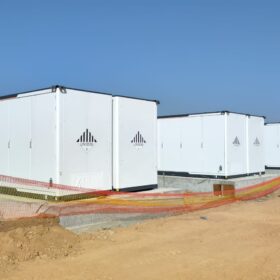Brazil could add 18.2 GW of energy storage by 2040
That figure would require incentives, regulation and ambition. A study by Clean Energy Latin America (CELA) estimated the Brazilian storage market should grow at least 12.8% annually through 2040, reaching a cumulative 7.2 GW, excluding client-side, ‘behind-the-meter’ installations.
New research estimates average long-term green hydrogen price at $32/MWh
New research from Norway has found that deploying around 140 GW of green hydrogen generation capacity by 2050 could make green hydrogen economically viable in Europe. Reaching this scale may help balance system costs effectively while increasing renewable integration, making green hydrogen a self-sustaining technology without subsidies, according to the scientists.
Australia closed on a record 3.9 GWh of battery storage capacity in July-to-September
Eight new battery projects added up to 95% more volume than was recorded in Q3, 2023, according to a Clean Energy Council (CEC) quarterly report which also pointed to a renewables generation boom.
The Hydrogen Stream: EU to move forward with H2 projects
The European Union will continue advancing hydrogen projects, focusing on infrastructure design and supporting production with European equipment, according to Ursula von der Leyen, president of the European Commission.
Solarwatt launches new inverters, batteries
Solarwatt has launched six new inverters and batteries as part of its Solarwatt Home line and outlined its future strategy. The German company, currently in transition, recently closed its solar module plant in Germany and announced staff reductions.
New grid forming strategy for solar batteries
A group of scientists from a major Chinese grid operator have proposed to use an enhanced version of the particle swarm optimization algorithm to adjust inertia and damping coefficients in batteries linked to PV systems. Their approach was validated through a series of simulation and was found to enhance transient performance.
Indian state of Rajasthan tendering up to 2 GWh of battery storage capacity
State utility Rajasthan Vidyut Utpadan Nigam Ltd (RVUNL) is tendering for 500 MW/1 GWh of standalone battery energy storage systems (BESS) and may allot double that capacity, given sufficient demand.
Phnix presents new residential air-to-water heat pumps
The Chinese manufacturer said its new Heco series uses propane (R290) as a refrigerant and includes five models with a nominal capacity ranging from 6 kW to 17 kW.
UK startup launches AI air-source residential heat pump
UK-based Wondrwall says its new heat pump has a coefficient of performance of up to 4.99, with an inlet-outlet temperature of 30 C to 35 C. The system is based on the company’s AI-powered Home Energy Management System (HEMS) to efficiently manage household energy flows.
New research optimizes energy density in sodium-ion batteries
A machine learning model has identified Na[Mn0.36Ni0.44Ti0.15Fe0.05]O2 as the optimum composition to attain the highest energy density for sodium-ion (Na-ion) devices.









